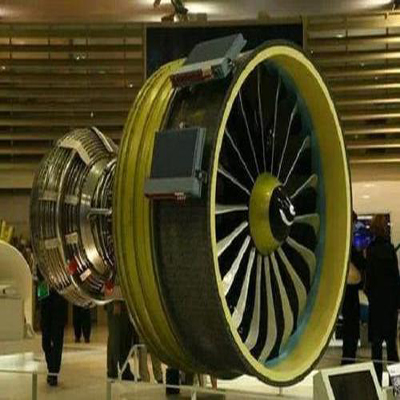- Home
- Products
- Elementary
- Boride Powder
- 3D Printing Powder
- Sulfide Powder
- Oxide Powder
- Carbide powder
- Nitride Powder
- Silicide Powder
- Hydride Powder
- Telluride Powder
- Selenide Powder
- Stearic Acid Series
- Phosphide Powder
- Nanoparticles
- Metal Alloy
- MAX Phase
- Lithium Battery Anode
- Surfactant
- Molecular sieves
- Concrete Admixtures
- News
- Answers
- Contact
- About
About Silicon Carbide Ceramics Some Things You Dont Know
Silicon carbide ceramic buildings
Silicon carbide porcelains have high solidity, high melting factor (2400 ℃), high wear resistance and also rust resistance, as well as outstanding oxidation resistance, high temperature level stamina, chemical security, thermal shock resistance, thermal conductivity and also excellent air rigidity. And so, it has actually been widely utilized in energy, metallurgy, equipment, oil, chemical, aviation, aerospace, defense as well as other areas.

Black silicon carbide as well as eco-friendly silicon carbide: The rough sector repeatedly splits silicon carbide right into black carbonized laurel and environment-friendly silicon carbide according to color, both of which are hexagonal crystals, and all come from α& alpha;
-SiC. Black silicon carbide includes concerning 98.5% SiC. Black silicon carbide is made from quartz sand, petroleum coke and also high-quality silica as the primary raw products, and is heated by electrical heating system at high temperature. Its solidity is between diamond as well as diamond, the mechanical strength is more than corundum, and also it is breakable as well as sharp. Its durability is greater than that of eco-friendly silicon carbide, and also it is mainly utilized to process materials with low tensile stamina, such as glass, porcelains, stone, refractory products, cast iron and non-ferrous steels.
Environment-friendly silicon carbide contains greater than 99% SiC. Green silicon carbide is made of petroleum coke and top quality silica. It is included with salt as an additive and also is smelted by high temperature heating system. It is self-sharpening as well as is mostly made use of for machining hard alloys, alloys as well as optical glass. It is also made use of for wear-resistant cyndrical tube liners and also fine-grained high-speed steel tools.

Silicon carbide ceramic usage: The solid covalent bond of SiC is the origin of a series of exceptional buildings of SiC porcelains, yet it additionally brings troubles in sintering. The covalent bond is also solid, which prevents the sintering densification of SiC ceramics. Because of this, the sintering temperature level needs to be increased., which increases the price as well as limits its application in sector.
From the factor of view of thermodynamics, the reduction of free power triggered by the cluster of the original powder throughout sintering is the major driving force for densification. Nevertheless, the cost-free energy of the SiC grain boundary is fairly high, leading to a reduction in the totally free power of the powder even if the agglomeration comes to be a solid-solid interface from the solid-gas interface. The smaller sized the totally free power difference is, the smaller sized the driving pressure of the sintering procedure is. Therefore, the SiC powder is a lot more hard to be sintered than other porcelains. The existing usual approach is to include sintering help, lower the initial powder fragment size and also pressurize. Adjustment its free energy and also advertise the densification of SiC.
From the viewpoint of kinetics, the major mass transfer systems in the sintering procedure are: dissipation as well as condensation, thick circulation, surface diffusion, grain limit or lattice diffusion and also plastic contortion. The solid covalent bond of SiC brings about slower solid-phase mass transfer rate such as lattice diffusion and surface diffusion, while gas phase mass transfer needs high temperature to advertise powder decay. The disintegration temperature of SiC is up to 2500 °& deg; C, so relying upon gas stage mass transfer to understand ceramics Densification is difficult. Therefore, the existing sintering process generally attains the thick flow by adding a sintering help to enhance the strong phase diffusion price of SiC or to develop a thick liquid glass phase-assisted SiC.

SiC porcelains are highly pure and can raise the thermal conductivity of SiC ceramics without other impurities. Nevertheless, in the sintering process, sintering help must be introduced to lower the sintering temperature level as well as enhance the thickness. Exactly how to fix the opposition in between both is the sintering of high thermal conductivity SiC porcelains. Difficulties and top priorities.
Al2O3 porcelains have reasonably reduced sintering temperature, affordable as well as excellent electric insulation efficiency. They have been extensively utilized, but their thermal conductivity is low, and their application in high-power circuits is limited.
BeO ceramics have good dielectric properties and are used as high-heat-conducting substrate products in some areas. However, due to the poisoning of BeO, Europe, the United States, Japan and various other areas have started to issue guidelines restricting the sales and also development of digital products having BeO.
AlN porcelains have superb thermal and electrical insulation as well as reduced dielectric constant, making them suitable for high power circuits. Nonetheless, the sintering temperature level of AlN ceramics is too expensive, leading to a difficult prep work process and also high expense, as well as has actually not been subjected to large-scale manufacturing and also application. As well as AlN is vulnerable to hydrolysis response, as well as its dependability is inadequate in wet settings.
SiC porcelains have low density, high mechanical stamina, good oxidation resistance, use resistance, superb thermal shock resistance, small thermal growth coefficient and also high thermal expansion coefficient matching with the chip. They are resistant to chemical deterioration as well as have great development in the field of digital products. And also the application potential customers can fulfill the requirements of high performance, little dimension, lightweight and also high dependability of digital gadgets in the future.
Luoyang Tech Co., Ltd is a professional Silicon carbide ceramic supplier with over 12 years experience in chemical products r & d. If you are searching for top quality Silicon carbide ceramic, please do not hesitate to contact us as well as send out an inquiry.
Inquiry us
NEXT NEWS